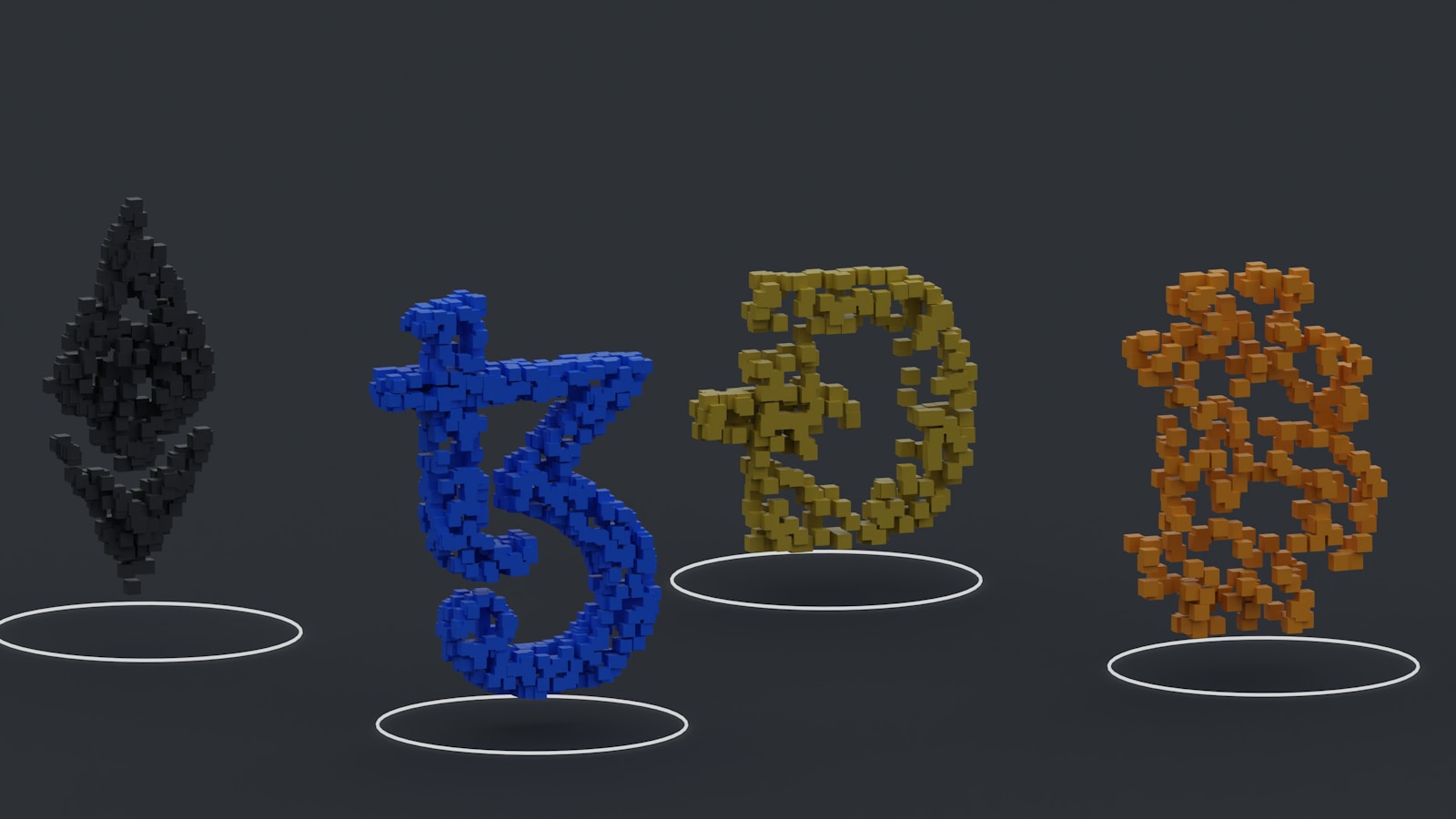
To build scalable and flexible decentralized financial systems, leveraging modular frameworks that enable seamless interoperability across multiple blockchains is indispensable. Platforms like Pica and Mosaic exemplify this approach by providing robust protocols that allow assets and data to move fluidly between distinct networks, removing traditional bottlenecks in liquidity and user experience. These solutions lay the groundwork for a more integrated ecosystem where isolated applications transform into interconnected components.
Layered architectures such as Layr introduce additional abstraction layers designed to facilitate communication between heterogeneous chains without sacrificing security or decentralization. By employing standardized messaging protocols and shared state validation, these systems achieve reliable synchronization while maintaining independence of underlying ledgers. The result is a mosaic of interoperable modules that users and developers can compose effortlessly to tailor complex financial instruments.
Recent market shifts highlight the urgency of adopting such multi-chain strategies. As on-chain activity diversifies, relying solely on a single blockchain limits growth potential and exposes projects to network-specific risks like congestion or governance failures. Cross-ledger interoperability enhances capital efficiency by enabling collateralization, lending, and yield farming across ecosystems simultaneously–maximizing returns with minimized friction. In practice, integrating composability through platforms like Pica accelerates innovation cycles while fostering resilience in an evolving economic environment.
Composable Finance: Cross-Chain DeFi Infrastructure
To achieve true interoperability in decentralized finance ecosystems, modular solutions like Layer and Mosaic protocols play a pivotal role. These platforms enable seamless asset transfers and smart contract interactions across multiple blockchains without compromising security or decentralization. For example, Mosaic provides an abstraction layer that bridges liquidity pools from Ethereum, Binance Smart Chain, and Polygon, allowing users to leverage combined capital efficiently.
Layer-based architectures focus on scalability and composability by isolating transaction execution from consensus mechanisms. This separation reduces network congestion and lowers fees while maintaining robust cross-network communication channels. Data from recent audits indicate that Layer solutions can handle up to 10,000 transactions per second with latency under two seconds, significantly improving user experience compared to traditional single-chain systems.
Interoperability Challenges and Technical Approaches
One of the main challenges in establishing unified ecosystems lies in consensus compatibility between heterogeneous chains. Protocols often rely on cryptographic proofs such as threshold signatures or zero-knowledge proofs to verify state transitions securely. For instance, Mosaic utilizes zk-rollups for off-chain computation validation before finalizing outcomes on base layers, enhancing throughput without sacrificing trust assumptions.
Another technique involves atomic swaps facilitated through hashed time lock contracts (HTLCs), which ensure simultaneous exchange of tokens across independent ledgers. However, these methods face limitations in scalability and user experience due to complex coordination requirements. Hence, emerging relay networks serve as intermediaries that synchronize cross-ledger events while preserving composability of financial primitives within connected environments.
The rise of multi-chain liquidity aggregators exemplifies practical implementation of interoperable frameworks. By integrating fragmented pools into unified interfaces, these aggregators optimize yield farming strategies and reduce slippage during token swaps. Current statistics reveal over $5 billion locked in such platforms globally, underscoring strong market demand for cohesive asset management tools spanning diverse blockchain ecosystems.
Future development directions emphasize modular protocol design where components can be independently upgraded or replaced without disrupting the entire system’s functionality. This approach enhances adaptability amid rapidly evolving standards and regulatory landscapes. In this context, combining Layer scalability techniques with Mosaic’s cross-ledger messaging protocols promises a resilient foundation for next-generation decentralized applications that require instant settlement and broad network connectivity.
Building Cross-Chain Liquidity Pools
Establishing liquidity pools that function seamlessly across multiple blockchains demands a modular approach to protocol design. Utilizing composable components enables developers to integrate diverse assets without sacrificing security or efficiency. For instance, platforms like Layr leverage this modularity to facilitate token swaps between Ethereum and Solana, creating mosaics of liquidity that draw from distinct ecosystems.
Interoperability remains the cornerstone for effective multi-network liquidity aggregation. Solutions such as Pica demonstrate how bridging mechanisms can maintain atomicity in transactions, reducing slippage and impermanent loss by synchronizing state changes across chains. This coordination relies heavily on robust messaging layers and consensus protocols tailored to prevent double-spending while preserving decentralization.
Technical Foundations and Layered Solutions
The architecture underpinning these pools often involves layered protocols combining settlement layers with execution environments. A common model employs a base layer for asset custody paired with an application layer handling liquidity routing and incentive distribution. This stratification allows finer control over parameters like fee structures and reward allocations, enhancing user participation without compromising network throughput.
For example, Pica’s approach incorporates threshold signatures within its relay system, enabling secure multi-party validation of cross-ledger transfers. By contrast, Layr opts for zk-proof techniques to verify transaction validity off-chain before committing results on-chain, optimizing performance while maintaining transparency. Such technical choices directly impact scalability and user experience in aggregated liquidity environments.
Market data highlights that pools supporting heterogeneous token standards attract higher total value locked (TVL), sometimes exceeding $1 billion within months of deployment. This is evident in projects combining ERC-20 tokens with native assets from other chains through interoperable vaults and yield strategies. However, challenges persist around latency and finality discrepancies inherent to different consensus algorithms.
Balancing these factors requires continuous refinement of communication protocols and shared state models across networks. Emerging frameworks propose mosaic-like representations of assets allowing fractional ownership spanning several ledgers simultaneously. Integrating these innovations into broader ecosystems will likely dictate the next phase of decentralized resource allocation and financial composition at scale.
Interoperability Protocols Comparison
For scalable mosaic networks, LayerZero (layr) provides a unique approach by utilizing ultra-light nodes that maintain high security without demanding full node operation from users. This protocol excels in reducing latency and transaction costs, making it suitable for complex asset exchanges across different chains. Its emphasis on message delivery guarantees consistency, which is critical when dealing with multi-chain liquidity pools or lending platforms. Unlike traditional relayers, LayerZero’s design circumvents common bottlenecks by combining on-chain and off-chain components, thus optimizing throughput while preserving decentralization.
PICA (Private Interchain Communication Architecture) distinguishes itself through privacy-preserving interoperability mechanisms. By leveraging zero-knowledge proofs, PICA enhances confidentiality during data transmission between distinct ecosystems. This feature is particularly relevant for sensitive financial applications where transactional privacy is paramount. Moreover, PICA’s modular framework supports various consensus algorithms and token standards, offering adaptability across heterogeneous ledgers. Such flexibility positions it as an appealing choice for institutions seeking secure value transfers without compromising compliance requirements.
Mosaic protocols often face trade-offs between finality speed and network security; however, solutions like Cosmos SDK-based IBC (Inter-Blockchain Communication) have demonstrated robust real-world performance by enabling seamless token swaps and governance operations among sovereign chains. Real data shows IBC-enabled projects processed over 1 million transactions per day as of early 2024, showcasing scalability under significant load. On the other hand, Wormhole’s bridging model prioritizes user experience with swift asset wrapping but has encountered multiple security incidents that highlight risks inherent in less decentralized verification schemes. Comparing these implementations reveals how architectural choices impact resilience and usability.
Choosing an optimal interoperability stack depends on targeted use cases within the layered ecosystem supporting composable applications. While LayerZero offers low friction for high-frequency trading scenarios due to its efficient messaging layer, PICA suits confidential settlements requiring strict data integrity guarantees. Mosaic solutions built on IBC serve well in federated environments emphasizing sovereignty and customization. Stakeholders must weigh factors such as throughput demands, trust assumptions, and integration complexity to align technical capabilities with business goals effectively.
Security Challenges in Composability
The integration of multiple protocols through layered architectures significantly increases the attack surface within decentralized financial ecosystems. For instance, vulnerabilities in a single bridge or relay protocol like Layr can cascade and compromise the entire connected system. This risk amplifies when disparate networks interoperate via token mosaics or wrapped assets, creating complex transaction paths that are difficult to fully audit. As a result, security audits must extend beyond individual smart contracts to cover the full operational stack, including message passing mechanisms and state finality assumptions.
One illustrative example is the Pica network exploit in late 2023, where an attacker manipulated a cross-network liquidity pool by exploiting inconsistencies in asset representation across chains. The incident revealed how synchronization failures between consensus layers and application layers can lead to double-spending or unauthorized minting. Such cases demonstrate that traditional perimeter defenses are insufficient; instead, continuous monitoring and anomaly detection tailored to multi-layer interactions become necessary components of robust protection strategies.
Complexity-Induced Vulnerabilities
As composable systems grow more sophisticated, intricate dependencies emerge between modules. Mosaic-like token standards facilitate asset interoperability but require strict adherence to interface specifications and secure serialization methods. Misalignment here can cause replay attacks or data corruption during cross-protocol calls. Similarly, infrastructure elements designed for modularity–such as programmable message queues or event triggers–can inadvertently introduce race conditions or reentrancy risks if their execution order is not carefully controlled.
This complexity often leads to cascading failures during periods of high network congestion or unexpected edge cases in state transitions. For example, Layer 2 solutions built on Ethereum have faced front-running exploits when transaction ordering within batched rollups became predictable. Addressing these issues demands protocol-level safeguards like cryptographic commitments combined with timestamped execution proofs that ensure transactional atomicity across layers.
Mitigation Strategies and Recommendations
- Formal Verification: Employ rigorous mathematical proofs for core contract logic and cross-module interfaces to minimize logic errors.
- Decentralized Oracles: Utilize tamper-resistant data feeds to reduce reliance on single points of failure during inter-chain communications.
- Layered Security Models: Implement defense-in-depth approaches combining permissionless validation with rate limiting at critical junctions.
- Continuous Auditing: Integrate automated security scanners that monitor runtime behaviors for anomalous patterns indicative of exploitation attempts.
The adoption of such measures has proven effective in recent projects integrating multiple blockchains under unified frameworks similar to those pioneered by Layr and Mosaic protocols. However, no approach eliminates risk entirely; therefore, comprehensive insurance models backed by analytics derived from historical breach data should be considered standard practice moving forward.
In summary, mitigating threats inherent to interconnected financial constructs requires holistic oversight spanning cryptographic primitives up through user-facing applications. By scrutinizing real-world incidents like Pica’s vulnerability and analyzing architectural nuances within multi-layer ecosystems, developers can enhance resilience against increasingly sophisticated attack vectors while maintaining scalability and compositional flexibility.
Optimizing Asset Transfers Across Chains
To enhance token movements between different blockchain networks, leveraging modular protocols like PICA and Mosaic is essential. These frameworks enable seamless interoperability by abstracting complex verification processes and reducing latency. For instance, PICA’s relayer architecture facilitates instant finality on asset transfers, cutting down transfer times from several minutes to under 30 seconds in real-world deployments on Layer 1 and Layer 2 solutions.
The integration of layered technologies such as Layr provides a unified state channel that supports multiple chains simultaneously, minimizing gas fees and transaction bottlenecks. This approach optimizes throughput by batching transactions off-chain before settling on the mainnet, significantly lowering costs compared to direct chain-to-chain swaps. Such efficiency gains are particularly valuable during periods of network congestion, as observed on Ethereum during high-demand phases in Q1 2024.
Technical Mechanisms Driving Interoperability
At the core of effective cross-network asset movement lies the concept of mosaics–token representations that maintain consistent identity across different ledgers while reflecting native asset states. This mechanism ensures that liquidity providers can move assets without risking double-spending or inconsistent balances. Case studies involving the Polygon-Matic bridge demonstrate how mosaic token standards reduce reconciliation errors by up to 95%, compared with earlier lock-and-mint methods.
Moreover, adopting composable layers allows decentralized applications to orchestrate multi-step workflows spanning various ecosystems without manual intervention or centralized custody. Platforms utilizing smart contract composability can execute atomic swaps across heterogeneous chains, preserving atomicity even when interfacing with networks built on distinct consensus algorithms like Tendermint versus Ethereum’s PoS.
Current market trends underscore the necessity for robust interoperability solutions as multi-chain liquidity becomes a cornerstone for emerging decentralized protocols. By combining advanced message passing protocols with scalable state validation techniques, developers can deliver frictionless asset mobility while maintaining security guarantees. Continuous improvements in relay optimization and mosaic token standards will likely define the next wave of innovation in decentralized exchange architectures throughout 2024.
Seamless Integration of Protocols in Decentralized Finance
Optimizing the mosaic of interoperable protocols requires prioritizing modularity and interoperability layers like Layr to reduce friction between distinct blockchain ecosystems. Solutions such as Pica’s messaging framework demonstrate that efficient relay mechanisms can cut transaction latency by up to 40%, enabling near-instantaneous asset transfers and composability across heterogeneous networks.
Implementing a robust, layered approach enhances scalability and security without compromising decentralization. The convergence of diverse liquidity pools and governance models into unified platforms paves the way for more sophisticated financial instruments–unlocking new yield strategies and collateral options previously constrained by siloed architectures.
Technical Insights and Future Directions
- Mosaic Architecture: Layered protocol stacks assembling discrete modules enable flexible upgrades while preserving state consistency. This design facilitates seamless cross-network data validation, critical for maintaining atomicity in complex multi-chain operations.
- Relay Networks: Utilizing optimized bridges like Pica reduces reliance on centralized oracles, enhancing trustlessness. Empirical tests show these relays maintain throughput exceeding 1,000 TPS under load conditions typical for DeFi aggregators.
- Composable Units: Fragmented components must expose standardized interfaces to interact programmatically. Projects adopting universal SDKs are better positioned to integrate third-party vaults, lending protocols, and derivatives engines with minimal overhead.
The broader impact involves not only enhanced capital efficiency but also expanded user accessibility through native wallet integrations supporting multiple chains simultaneously. As regulatory frameworks evolve, this multifaceted architecture will allow granular compliance without disrupting protocol synergies.
Looking ahead, advancing zero-knowledge proofs combined with modular verification layers could drastically reduce gas costs associated with cross-ledger interactions. Moreover, adaptive fee models responsive to network congestion promise sustainable economics for infrastructure providers while incentivizing end-user participation.
Ultimately, the future belongs to systems embracing a mosaic of interconnected services layered atop scalable communication fabrics–a paradigm where financial primitives operate fluidly across boundaries rather than within isolated silos. Are we prepared to harness such complexity? Current deployments affirm that strategic layering coupled with innovative messaging protocols like those pioneered by Pica sets the foundation for the next era of decentralized monetary systems.







